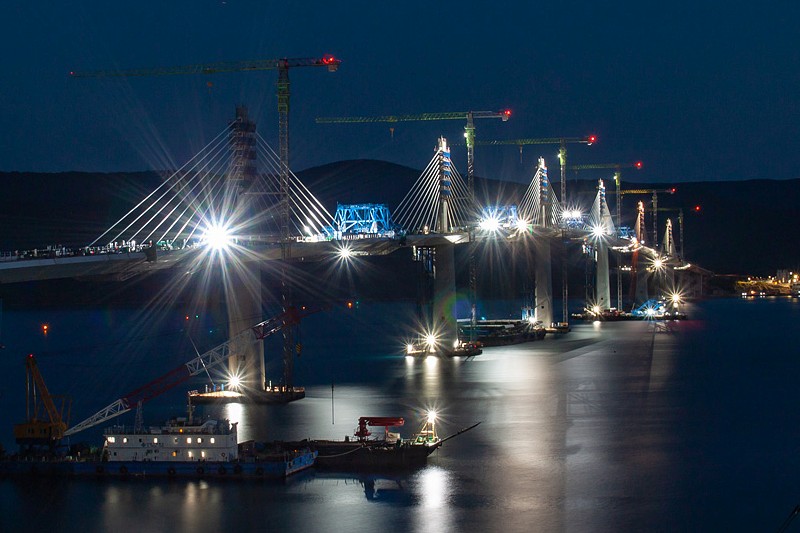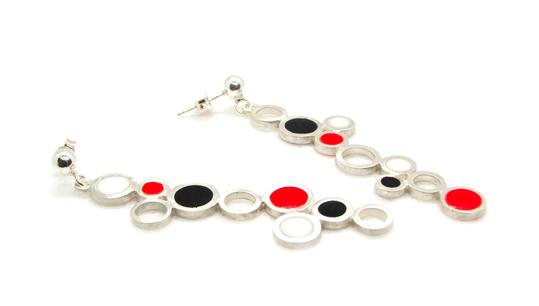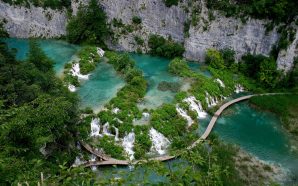With the installation of the last, 165th segment of the steel span of the Pelješac Bridge on Wednesday evening, the bridge will be joined together from Komarna to Brijesta and provide a long-awaited road link between the southernmost part of Croatia with the rest of the country, a project that was neither easy nor without obstacles.
“The Pelješac Bridge is the most important and largest infrastructure project currently underway in Croatia… It will finally connect our territory and we can say that the government has accomplished a dream many wanted to abandon,” Sea, Transport and Infrastructure Minister Oleg Butković told Hina, noting that the bridge is among the biggest structures of its kind built in Europe in the 21st century.
Work on the 2.4 kilometre bridge, connecting the Pelješac peninsula with the mainland to bypass a short stretch of the coast at Neum where Bosnia and Herzegovina has access to the sea, started three years ago. The project is worth €550 million, of which 357 million has been provided by the EU.
“The bridge itself is a very complex construction project, but so is the rest of the project, namely access roads running through the Pelješac peninsula and the Ston ring road. That segment is more than 30 kilometres long … Work is currently underway on two viaducts, three bridges and four tunnels, of which the Debeli Brijeg tunnel is the fifth longest in Croatia. Three of the four tunnels have been drilled and the pace of work is satisfactory so we expect the access roads to be completed in the summer of 2022, which will mark the completion of this long-awaited project to connect the southernmost part of Croatia with the rest of the country by road,” said the minister.
The decades-long dream of connecting Croatia resulted in a government decision of February 2017 to finance the project, which was to be co-financed by the European Union. The decision was a precondition for the project to be launched.
Before that, in May 2013, the European Commission ordered a preliminary feasibility study which showed that the Pelješac Bridge was the best solution for joining Croatia’s south with the rest of the country.
The government’s decision of 2017 is part of the Strategy for the Transport Development of Croatia in the period from 2014 to 2030.
The total value of the Pelješac Bridge project was estimated at €420.3 million, covering the bridge, the access roads and the Ston ring road. In addition to that, dozens of millions of kuna was spent on the purchase of land from local residents to build the access roads and the bridge.
After JASPERS, an EU technical assistance facility which provides the member states with the support they need to prepare high quality major projects, which will be co-financed by EU funds, okayed the Pelješac Bridge project, the European Commission made a decision to co-finance it with €357 million.
The Hrvatske Ceste road operator in 2016 published a document envisaging work on the bridge in four stages, including the construction of access roads, the bridge itself, a road on Pelješac, and the construction of the Ston ring road, with the duration of the project set at five years.
The total value of the project was initially set at €420 million, of which the EU was to contribute €330 million or 78.5%.
The 2,440-metre bridge is a hybrid structure, with 13 spans, of which five central spans are each 285 metres long, six 33-metre-high centrally installed pylons made of reinforced concrete, and two lanes, plus a hard shoulder for bridge maintenance.
The navigation profile under the bridge was agreed with a group of experts from Bosnia and Herzegovina. The bridge’s designer is Marjan Pipenbaher of Croatia.
In January 2018, three bids were submitted for the project, and Hrvatske Ceste reported that the bid submitted by a consortium comprising China Road and Bridge Corporation, CCCC Highway Consultants Co. Ltd., CCCC Second Highway Engineering Co. Ltd. and CCCC Second Harbour Engineering Co. Ltd. was chosen as the most favourable one.
The price offered was HRK 2.081 billion, excluding VAT, and the deadline for the completion of the project was 36 months.
The other bidders were the Austrian Strabag company and an Italian-Turkish consortium.
China Road and Bridge Corporation is a subsidiary of the state-owned China Communications Construction Company (CCCC) specialising in the construction of highways, bridges, ports, tunnels, drainage systems and other civil engineering structures. The company also manufactures and sells road machines.
The start of work on the project was slowed down by complaints to the outcome of the tender, with the state commission for public procurement oversight eventually dismissing the complaints by Strabag and the consortium comprising Italy’s Astaldi and Turkey’s IC Ictas Sanayija.
On 31 July 2018, work on the bridge was officially launched.
Lu Shengwei, a representative of the Chinese contractor, said then that work would be completed on time and that local companies would be hired, as was always the case with the company’s international contracts.
Following delays due to the bidders’ complaints, Bosnia and Herzegovina (BiH) threatened a lawsuit, with the Bosniak SDA party saying the bridge could not be built to the detriment of Bosnia and Herzegovina’s territorial integrity and sovereignty.
Party official Halid Genjac at the time called for the ratification of a BiH-Croatia border agreement signed in 1999, noting that the bridge must not bring into question BiH’s right to access the high seas.
In October 2018 the Bosniak member of BiH’s collective state presidency, Bakir Izetbegović, said that he believed the tough stance on the project would result in the protection of what he considered to be BiH’s national interest.
This was not the last obstacle to the project, and a year later the selection of the contractor for access roads came to a halt again after Strabag submitted a complaint to the state commission for public procurement oversight challenging the selection of the Greek Avax company for the project to build the Sparagovići-Doli road section.
Strabag also complained against Avax having been chosen to build the Doli-Duboka road section, and the complaint was accepted, after which Strabag was awarded the job.
The Austrian company previously complained against China Bridge and Road Corporation having been chosen to build the Pelješac Bridge while Avax complained against Strabag being selected to build the Duboka-Sparagovići road section.
Complaints, including some that were pointless, were numerous and the state commission for public procurement oversight eventually dismissed them all.
The main contractors working on access roads for the Pelješac Bridge are Strabag and Avax, and the work on them is expected to be completed a few months after the completion of the bridge.
SOURCE: Vlada.hr
PHOTO: Wikimedia https://commons.wikimedia.org/wiki/User:Ballota


























